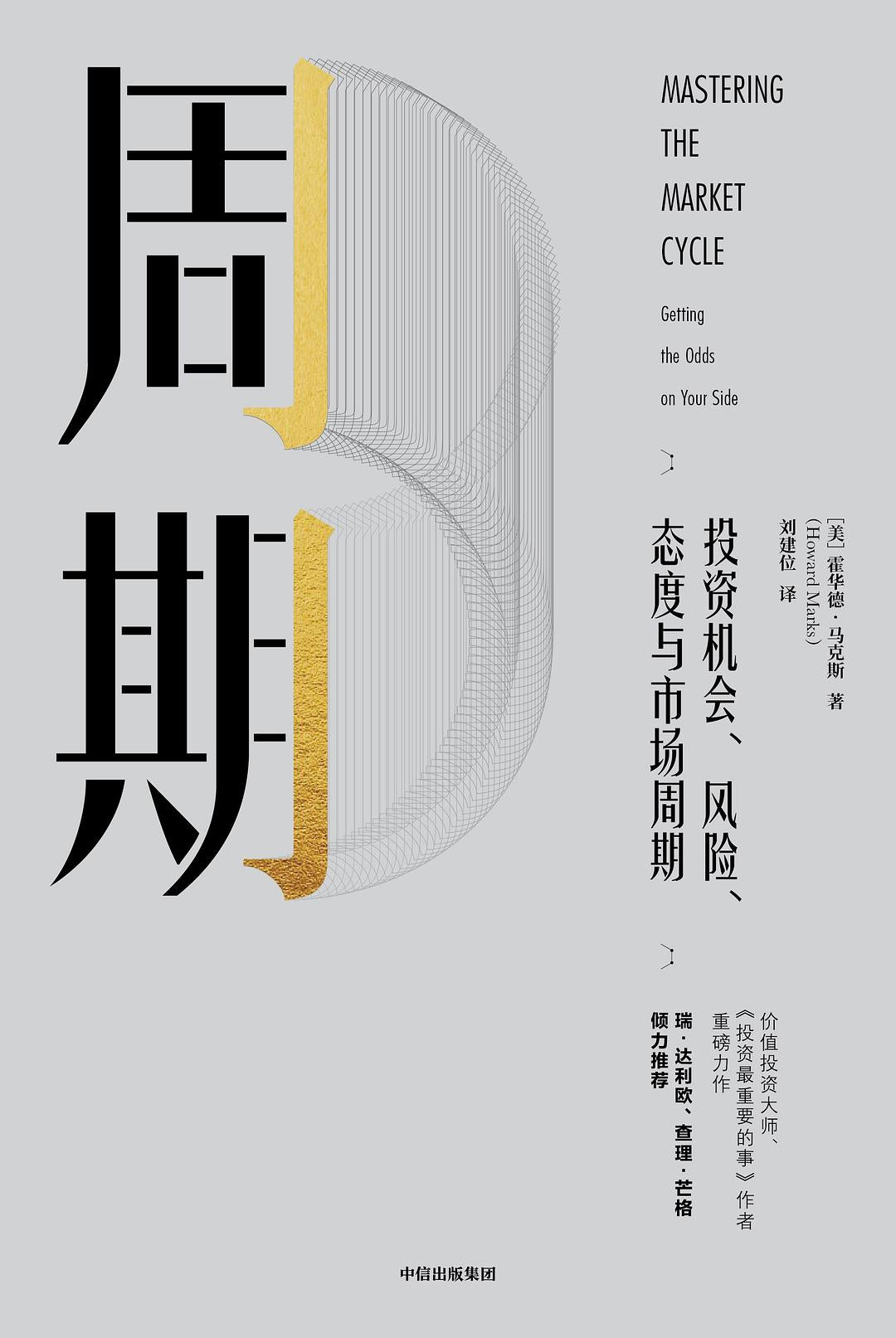WULOLIFE
《周期》副标题: 投资机会、风险、态度与市场周期 作者:中信出版社
《周期》副标题: 投资机会、风险、态度与市场周期 作者:中信出版社
Couldn't load pickup availability
Description
内容简介 · · · · · ·
每个投资人都想清楚自己现在所处的周期位置。也就是说,人们渴望知道自己下一步应该追加投资,继续留在市场,还是应该果断卖出,离开市场。大家都知道市场周期起伏波动,然而,大部分投资人往往只想到市场周期的首层浅思维。这本书会带你进入市场周期的二层浅思维,教你看懂过去的周期规律,看清现在的周期位置,看透未来数赢家穿越金融危机、长期战胜市场的投资布局真经。
霍华德▪马克斯是一位价值投资者。他将周期细分为经济周期、政府干预经济周期、企业盈利周期、投资人心理和情绪钟摆、风险态度周期、信贷周期、其中,作者总结了自己50多年的投资经验,提出了一个鲜明的观点:人的决策对经济周期、企业周期、市场周期产生了巨大影响,而人做的决策,并不是科学的。他认为,人容易走极端的倾向,永远不会终止,因此,这些极端最终需要修正,而不是周期的发生会有改变。投资人需要警惕“这次不一样”的Note:
作者简介 · · · · · ·
[美]霍华德•马克斯(Howard Marks)
橡树资本联席董事长及公司人之一。畅销书《投资最重要的事》作者。他获得宾夕法尼亚大学沃顿商学院的经济学学士学位,后获得芝加哥大学工商管理硕士学位。他也是特许金融分析师(CFA)。
作为世界顶尖的价值投资者, 20世纪90年代初开始写投资备忘录寄予投资人。他的备忘录深受华尔街,包括他的好朋友、投资大师巴菲特先生推崇。巴菲特先生为他的第一本书《投资最重要的事》题词:“这是一本难得一见的好书。”
目录 · · · · · ·
译者序IX
序言XIX
第一章为什么投资要研究周期?001
Note:我们可以增加赌注,投入更多资金买入资产,提高组合的进攻性;相反,当赢面对我们不利的时候,我们可以退出市场,增强组合的防守性。
第二章 周期的特征 015
不应该只是被看作一个事件接着一个事件发生,而应该被看作一个事件一个事件发生。这对分析周期事件之间的因果关系非常重要。
第三章 周期的规律 035
过去的事件受到随机性的很大影响,因此未来的事件也定会如此,我们肯定无法完全准确地预测。这让人感到不高兴,因为随机性,也就是我们通常所说的运气,让我们的人生难以永保安全。
第四章 经济周期 043
甚至即使经济经济增长率水平也会年年出现差异。
第五章 政府干预经济周期 065
既然周期上行和下行可能会走极端,那么应对周期走极端的工具应该是反周期的,人们可以按照其自身的周期来加以运用。在理想情况下,干预经济周期工具的周期正好与反。
第六章 企业盈利周期 073
是复杂又多变的。经济周期对一些企业的销售影响程度很大,对其他企业的销售影响程度却小得多。这主要是因为企业的经营杠杆和财务杠杆水平不一样。
第七章投资人心理和情绪钟摆 083
企业周期,金融周期,市场周期,在上行阶段大多都会走过头,不可避免地,在下行阶段也往往会走过头。这种周期容易走过头的现象,都是投资人心理钟摆摆动过度所造成的结果。
第八章 风险态度周期 105
风险?什么风险?我看不大可能会出错:到现在一直都很好。不管怎么样,风险都是我的朋友,承担的风险越多,我赚到的钱可能越多。 ”后来,到了市场行情糟糕的时候,很多投资人就完全转变了,换成了另外一套更简单的说法:“我根本不在乎能不能在市场上多挣一分钱,我唯一在乎的是不要再亏钱了。”
第九章 信贷周期 145
卓越投资并不是来自所买的资产质量好,而是来自所买的资产性价比高——资产质量不错,价格低,潜在收益率相当最有助于形成到处都是便宜货的情形,比其他任何因素的作用都要大。
第十章 不良债权周期 173
以确保借款人即使情况恶化,也能还本付息。随着奔向底部的比赛开始,贷款机构渴望赶快把款人提供贷款融资,接受不够稳健的债务结构,从而导致新发行的债券缺乏足够的安全边际。
第十一章 房地产周期 181
在买房这件事上,那些广泛流行的说法的影响特别突出。但是人们最终学到的是,这些说法不管说得多因为你投资买入的成本价格如果太高,那么什么理由都不好使。
第十二章 市场周期——集周期于一身 199
他们的投资以悲惨结局收场,其实是不可避免的,因为如果不让这个建立在错误判断基础上的过程走到极端,市场就不会上涨到牛市的最高点,而它也是市场反转下跌的起点,同样市场也就不会跌到熊市的最低点,而它也是反弹上涨的起点。
第十三章 如何应对市场周期225
决定你投资业绩的关键,不在于你买的东西是什么,而在于你买东西的价格有多高。你付的买价,即证券的市场价格及其相对于其内在价值而言的估值水平,取决于投资人的投资行为。
市场周期与投资布局 269
能否成功地布局投资组合应对市首先取决于你做什么,集中更多兵力进攻,还是更多兵力防守;其次取决于你什么时候做——基于你对周期所预示的未来市场趋势有卓越的理解力。
第十五章 应对周期有局限性 287
你想要在理解市场周期的基础上改变投资组合布局,以此来提升长期投资业绩,这种想法完全合情合理。但是你一定要理解,这种想法要求你具有高超的技能,且困难。
第十六章 成功本身也有周期 297
投资成功的关键是万事万物皆有周期,因而周期内肯定会有起起落落和不断重复循环。
第十七章 周期的未来 315
人容易走极端的倾向,永远不会终止。因此,这些极端最终必须得到修正,而不是周期的发生会有改变。经济和市场从来不是走一条直线,过去不走直线,未来也肯定不会走直线。
第十八章 周期精要 325
内容非常重要,能够大大地帮助你理解周期、周期的起因、如何应对周期。
